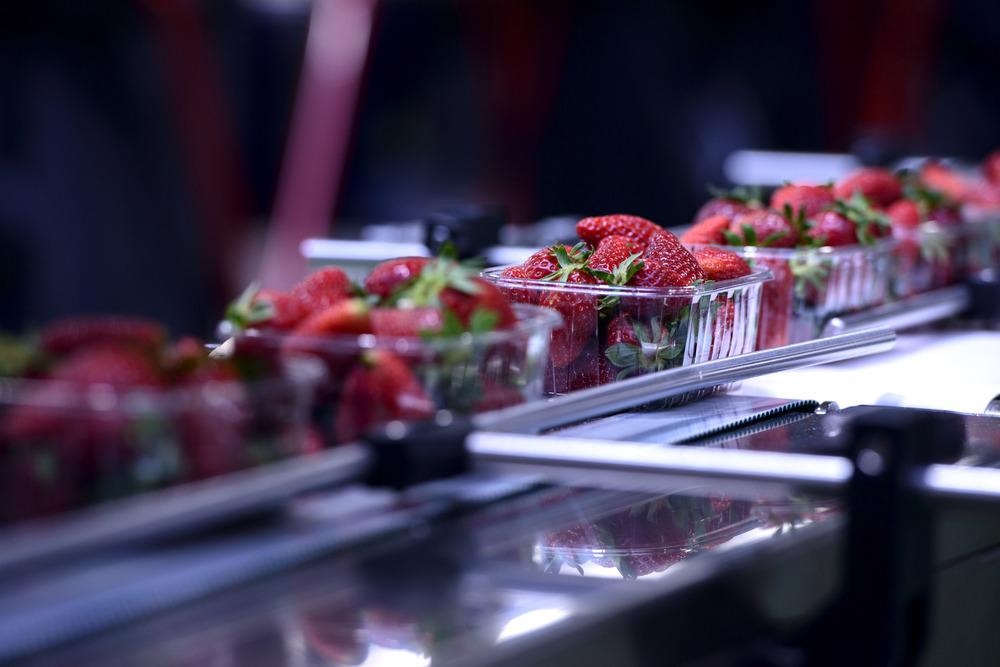
Image Credit: RomboStudio/Shutterstock.com
Nanotechnology has transformed several scientific and industrial sectors, including the food industry, where it has a role in food production, processing, storage, and quality control.
Why Use Nanotechnology?
Nanotechnology offers an opportunity to develop and apply novel structures, materials or systems with unique properties in food, agriculture and medicine industries. The use of nanotechnology can bring about a great difference in food quality and safety, and in the health benefits the food delivers, while also ensuring consumers accept food’s enhanced functional properties.
Nanomaterials are unlike conventional materials. Smaller than 100 nm, their minuscule size and high surface-to-volume ratio impart novel physicochemical properties related to solubility, strength, diffusivity, toxicity, and thermodynamics. Many also contain essential elements, are innocuous, and stable at high temperature and pressure.
Nanotechnology and the Food Industry
Nanomaterials’ unique characteristics enhance sensory food quality by imparting novel texture, color and appearance.
The application of nanotechnology in food can be categorized in two groups: food nanostructured ingredients and food nanosensing.
The food nanostructured ingredients category covers food processing and packaging, and encompasses additives, which are carriers for the smart delivery of nutrients and antimicrobial agents.
Food nanosensing helps achieve better food quality and safety.
Nanoencapsulation of Food Sensory Quality
The sensory quality of food – smell and flavor for example - influences consumption and is therefore incredibly important. However, sensory quality can be difficult to control and stabilize, specifically during food manufacture and storage.
The key to overcoming these issues could be encapsulating the flavor before it is used in food. Nanoencapsulation may be the most significant technology in food science, capable of controlling the release of flavors, and protecting against the degradation of flavors during processing and storage. Saliva can activate nanocapsules to release flavors in bursts, or over a sustained period, ensuring delivery at the desired time and rate.
The technique also offers a targeted delivery system to enhance the bioavailability of bioactive compounds such as vitamins, lipids, and flavonoids. These compounds struggle to survive the highly acidic environment of the stomach, where they undergo degradation by enzymes. Nanocarriers provide protection, increase surface area, and enhance the solubility and bioavailability of these compounds.
However, a system that can easily be incorporated without interfering with the texture and taste of food must be selected. Particle size is important; it must be able to deliver the active compound precisely to the target, ensure target availability at the correct time and specific rate, and be efficient enough to maintain the active compound for long periods.
Nanoencapsulation improves food shelf-life by slowing down the degradation process. For example, edible nano-coatings could provide a barrier to moisture and gas exchange in addition to delivering colors, flavors, antioxidants, and anti-browning agents. This increases the shelf-life of manufactured foods, even after opening.
Nanosensors and Packaging
Packaging plays an important role in keeping our food fresh. Nanotechnology improves food protection mechanisms, ensuring it remains safe to eat and extending its shelf-life.
Materials used in packaging must exhibit gas and moisture permeability in addition to strength and biodegradability. Nanocomposites and nanolaminates are actively used in packaging to provide a barrier against extreme thermal and mechanical shock and extend food shelf-life.
Nano-based smart or active packaging offers greater strength and improved barrier properties, with the ability to advise on food safety.
Nanosensors can be used in smart packaging to quickly, sensitively, and reliably detect microbes, pathogens, harmful chemicals, and pesticides. For example, Kraft Foods has developed an extremely sensitive nanosensor that detects food gases released by food as it goes off. A color-changing sensor strip offers a clear optical sign of food freshness.
Food Nanotechnology vs Food Safety
There are lots of advantages to using nanotechnology in foods and food packaging, with many applications yet to be realized. Researchers are finding new ways to enhance food quality while also maintaining the nutritional value of the end product.
However, amidst rising concerns about food quality and health benefits, public safety and environmental concerns must also be taken into consideration. The unfamiliar characteristics of nanomaterials could create unpredictable threats, the main concern being their migration from packaging and bioaccumulation in humans.
These concerns can be overcome with standardized tests to reduce consumer worries and improve the acceptability of such foods, while food legislation serves to regulate issues related to consumer health.
References and Further Reading
Hyunjong, Y. (2018) An Overview of Nanotechnology in Food Science: Preparative Methods, Practical Applications, and Safety. Journal of Chemistry. https://doi.org/10.1155/2018/5427978
Singh, T. (2017) Application of Nanotechnology in Food Science: Perception and Overview. Frontiers in Microbiology. https://doi.org/10.3389/fmicb.2017.01501
Disclaimer: The views expressed here are those of the author expressed in their private capacity and do not necessarily represent the views of AZoM.com Limited T/A AZoNetwork the owner and operator of this website. This disclaimer forms part of the Terms and conditions of use of this website.